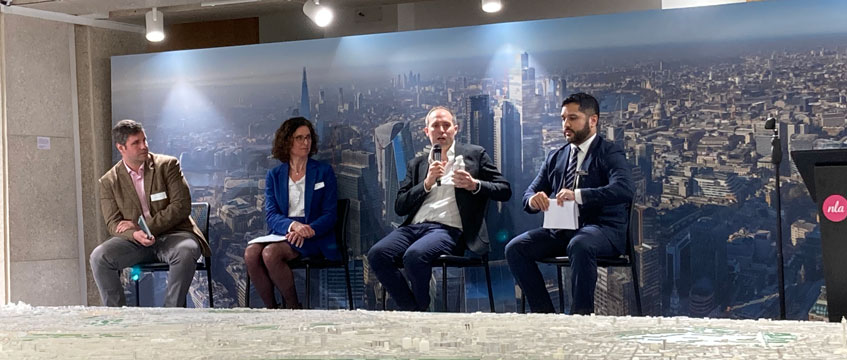Experts have warned that life sciences developers continue to be stymied by the challenge of delivering buildings of scale in the capital without a “coherent” national development plan.
Speakers at EEDN’s “Urban Insights: Bridging gaps in life sciences real estate” event last week said developers are struggling to find land in London to deliver sites with enough scale to satisfy occupier demand as well as cater to multiple types of businesses.
James Sheppard, who took on the new role of international head of asset management at Kadans Science Partner earlier this month, defined that scale as a “concentration” of buildings and the ability to serve “every single part of the spectrum”. That ranges from a two-person university spin-out seeking its first 500 sq ft laboratory, to a contract manufacturing organisation expanding to a 150,000 sq ft shed.
Developers said demand is focused on proximity to other businesses and the wider community. As a result, they face the challenge of delivering thousands of square feet of research and development space, while ensuring facilities are close to academic institutions, teaching hospitals and potential investors.
Artem Korolev, founder and chief executive at Mission Street, said: “The questions we always get asked by first-mover occupiers are: ‘What other companies are going to be there? And [what] is my company going to be proximate to?’”
Delegates were also told that neither single buildings nor science parks could completely satisfy occupier needs, given its reliance on connectivity between clusters and within the wider life sciences ecosystem.
Emma Andrews, planning director at Savills, said: “I think we need to look beyond the existing clusters and create a wider ecosystem which could then potentially connect with an international life sciences platform.”
Call for ‘coherent’ national plan
The challenge of creating scale within life sciences real estate in London has intensified over the past year, with real estate values and venture capital fundraising hit by wider macroeconomic headwinds.
Since supply of life sciences real estate in London is mostly being delivered through office-to-lab conversion projects, surging lab premiums are forcing tenants to take extra caution when progressing their expansion plans.
Korolev said: “Making those projects work is a particular challenge in cities like London, where [rents] are still reasonably high for a lot of the occupiers.”
As such, life sciences experts have called for a wider government plan to support developers in their effort to tackle the multitude of challenges thwarting the sector’s expansion, warning that the UK will lag behind its European counterparts without a clear strategy.
“Science is borderless. It doesn’t really matter whether it happens in London, Cambridge, Oxford or Manchester, there needs to be a coherent national plan,” said Sheppard. “The UK is at risk of falling behind other countries in Europe without the national plan.”
Korolev said: “Anything that promotes the strategic development of the sector can only be a good thing.
“The challenge would be to make sure that newly-created policies are flexible and respond to the sector, which grows quicker than real estate does.”
Developers also emphasised the need for a more efficient and rapid planning process to deliver the various types of buildings that the industry needs.
Korolev said: “Delivering life sciences buildings [of] scale could only be achieved through more joined-up planning and a more joined-up operation between people delivering science infrastructure and local authorities.”
Found in space
As for the types of locations that could become the life sciences districts of the future, Korolev pointed to a wealth of untapped potential in areas that need renewal, since they can accommodate the industry’s extensive requirement for space.
Korolev cited Kendal Square in Massachusetts, US, as an example where a derelict site was turned into an internationally recognised innovation district. The site was formerly occupied by Nasa.
Korolev believed this scenario could be replicated in the UK. “We’ve been really focused on that,” he added.
Elsewhere, policymakers were urged to introduce research and development facility-specific sustainability criteria to ensure that any future lab development is adequately benchmarked.
Paul Singh, founder of EEDN and an elected councillor and policy lead for small and medium-sized enterprises for the City of London Corporation, said there is an opportunity for the local authority and the government to “step up and to play a part in connecting the dots together”.
He said: “The life sciences sector has become a key part of the UK’s knowledge economy, recognised as strategically important by the government and policymakers [and] having a strong impact on the country’s health, wealth and its resilience.
“London has no doubt become a place for the life sciences businesses to home in [on] and grow, but there is lots more to do to unlock further potential of the city within this sector.”
Pictured (l-r): Artem Korolev, Emma Andrews, James Sheppard and Paul Singh
Send feedback to Evelina Grecenko
Follow Estates Gazette











